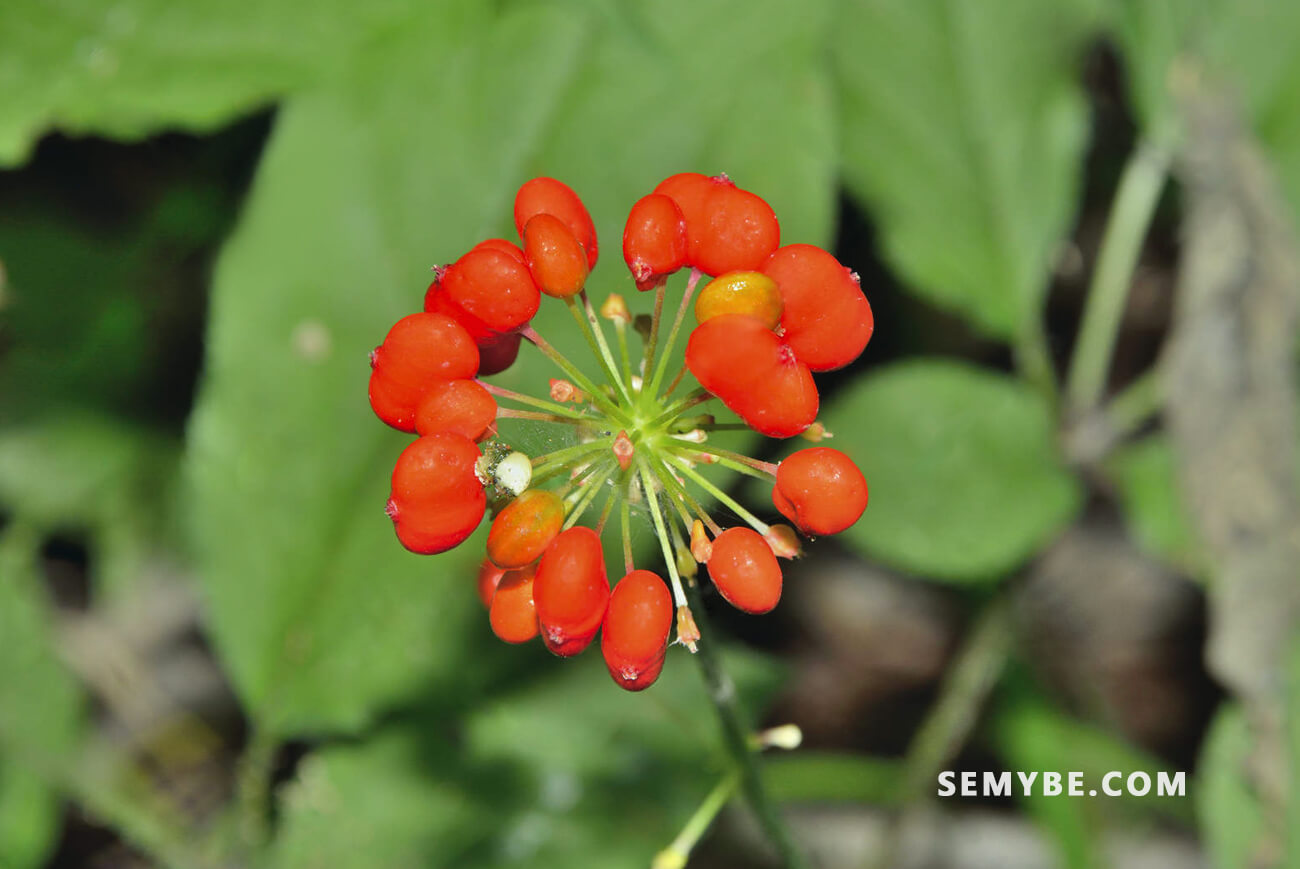
Panax Ginseng
1. History and use
The first use of ginseng, as a natural medicine, goes back more than 4000 years BC Originally, in China and North Korea, the feudal lords, emperors and their guards took advantage of its.
Therapeutic benefits: In traditional Chinese medicine, ginseng is renowned for curing all lls, fortifying the body and helping to guard against all forms of affection, but it has not been successful in other countries. Only from the eighteenth century, where it is used as an aphrodisiac, fortifying and nervous stimulant.
2. Description of the plant
Ginseng is a short-lived perennial plant that ranges from 30 to 50 cm, and is easily identifiable by its foliage, whose lobes have a webbed arrangement, and its whitish flowers, grouped in the umbel, give rise to small red berries united or biseminées, during the fructification. The power of this medicinal plant lies in its tuberous roots, whose size increases with age. lt is, in particular, ginsengs over 5 years old intervene in herbal medicine.

3. Curative action
General tonic action: Ginseng has variable effects It has a stimulating action in young subjects with a high qi, in the elderly or weakened by the disease, it has a fortifying action but also sedative. In China It is a tonic plant for athletes and people subjected to physical effort. It is also a male aphrodisiac Its tonic action is exercised on the elderly to which it allows better resist the cold.
4. Internal use
Ginseng is an invigorating plant that enhances the physical and intellectual capacities of weakened, stressed, asthenic and convalescent people, and for those suffering from impaired libido or sexual impotence.
Ginseng, aphrodisiac, will be very helpful to them. Organically administered, this medicinal plant also acts as an anti-inflammatory, an antioxidant, a stimulant of brain function, anabolic and immunostimulant.

5. Usual therapeutic indications
Ginseng is especially recommended to stimulate virility, improve physical endurance and intellectual performance, fight against depression, treat digestive disorders and strengthen the immune system. It is also an excellent support in the treatment of many diseases, such as cardiovascular problems, diabetes, hypercholesterolemia, and diseases disorders neurovegetative affecting cognitive functions.
6. Uses
Daily consumption of ginseng should be limited to 2 g, so that it is both effective and harmless. The minimum dosage is 800 mg. The amount to be taken will vary depending on the problem to be treated and the state of health of the patient.
To prepare an infusion, simply add 3 to 5 slices of ginseng in 3 cups of water and bring the mixture to the boil, using a ceramic container. The decoction is to take half an hour before one of the main meals.
The capsules are to be taken accompanied by a large glass of water, the morning and the afternoon, a few minutes before the meal.
Liquid extrats ( essential oil and ampoules) are to be taken in the morning on an empty stomach and in the middle of the day.




